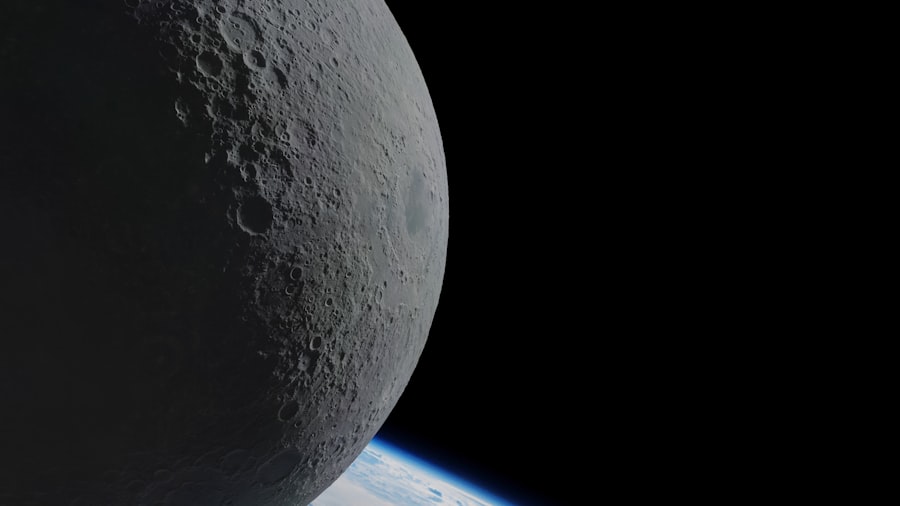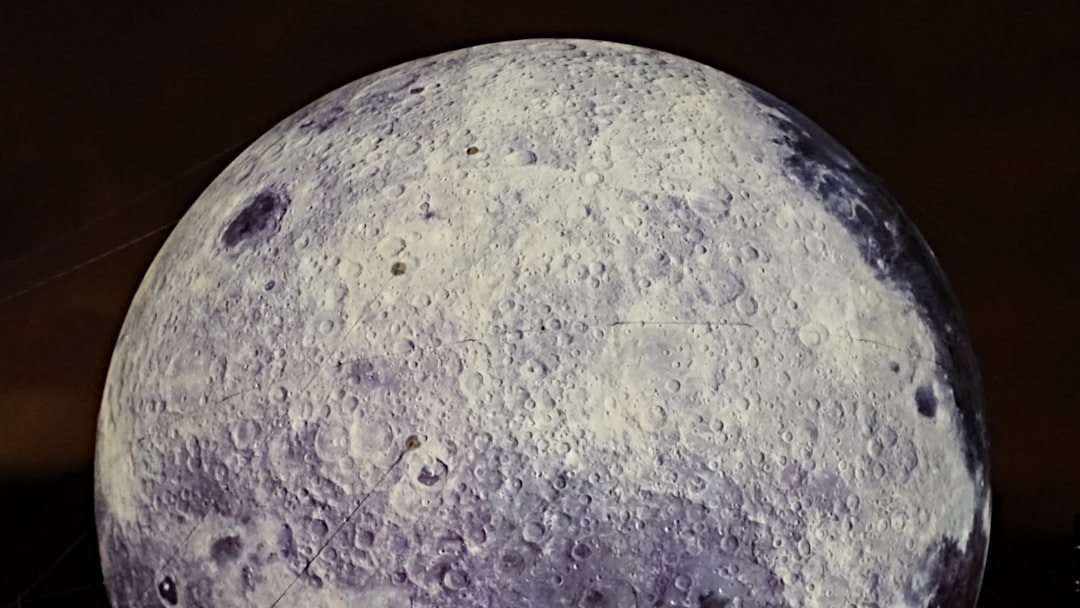The establishment of the United States Space Force (USSF) marked a significant evolution in the nation’s approach to space operations, emphasizing the need for a dedicated military branch to safeguard American interests in the cosmos. As part of its broader mission, the USSF has developed a comprehensive lunar strategy aimed at establishing a sustainable presence on the Moon. This strategy is not merely about exploration; it encompasses national security, scientific advancement, and international collaboration.
The Moon, often referred to as Earth’s natural satellite, is viewed as a critical stepping stone for future missions to Mars and beyond, making it an essential focus for the USSF. The lunar strategy of the USSF is multifaceted, addressing various aspects of lunar exploration and utilization. It seeks to leverage technological advancements while fostering partnerships with other nations and private entities.
By prioritizing a robust presence on the Moon, the USSF aims to ensure that the United States remains at the forefront of space exploration and maintains its strategic advantages in an increasingly competitive arena. The implications of this strategy extend beyond military interests, touching upon scientific research, resource utilization, and the potential for international cooperation in space.
Key Takeaways
- The United States Space Force’s Lunar Strategy aims to establish a sustainable presence on the Moon.
- Establishing a presence on the Moon is important for national security, scientific research, and commercial opportunities.
- The goals of the United States Space Force in lunar exploration include conducting scientific research, resource utilization, and enhancing international collaboration.
- Collaboration with international partners is crucial for sharing resources, expertise, and reducing the costs of lunar exploration.
- Technological advancements and innovations are essential for overcoming challenges and risks in lunar missions, such as radiation exposure and communication delays.
The Importance of Establishing a Presence on the Moon
Establishing a presence on the Moon is crucial for several reasons, not least of which is its strategic significance in terms of national security. The Moon serves as a vantage point for monitoring activities in space and on Earth, providing a unique platform for surveillance and reconnaissance. Furthermore, as nations around the world ramp up their lunar ambitions, having a foothold on the Moon allows the United States to assert its influence and leadership in space affairs.
This presence can deter potential adversaries from encroaching on American interests and ensure that the U.S. remains a dominant force in space exploration. In addition to security considerations, the Moon offers unparalleled opportunities for scientific research and technological development.
Its proximity to Earth makes it an ideal location for testing new technologies that could be used in deeper space missions. The lunar surface is rich in resources, including water ice and rare minerals, which could be harnessed for future missions or even for sustaining human life on the Moon. By establishing a permanent presence, the USSF can facilitate ongoing research that could lead to groundbreaking discoveries and innovations, ultimately benefiting humanity as a whole.
Goals and Objectives of the United States Space Force in Lunar Exploration

The goals and objectives of the USSF in lunar exploration are both ambitious and strategic. One primary objective is to establish a sustainable human presence on the Moon by the end of this decade. This involves not only sending astronauts but also creating infrastructure that supports long-term habitation and research.
The USSF envisions lunar bases equipped with life-support systems, laboratories for scientific experiments, and facilities for manufacturing and resource extraction. Such infrastructure would enable continuous operations and pave the way for future missions to Mars. Another key goal is to enhance national security through lunar capabilities.
The USSF aims to develop technologies that can protect American assets in space while also ensuring that any potential threats from adversarial nations are effectively countered. This includes deploying advanced communication systems, surveillance technologies, and defensive measures that can operate from lunar bases. By achieving these objectives, the USSF seeks to solidify its role as a leader in space operations while safeguarding American interests against emerging threats.
Collaboration with International Partners in Lunar Exploration
| Country | Number of Missions | Collaborative Projects |
|---|---|---|
| United States | 12 | Artemis program with ESA, JAXA, and others |
| China | 6 | Chang’e program with Russia, ESA, and others |
| India | 3 | Chandrayaan program with NASA, ESA, and others |
Collaboration with international partners is a cornerstone of the USSF’s lunar strategy. Recognizing that space exploration is a global endeavor, the USSF actively seeks partnerships with other nations and organizations to share knowledge, resources, and expertise. Collaborative efforts can lead to more efficient missions, reduced costs, and enhanced safety through shared technology and information.
By working together with allies such as NASA, ESA (European Space Agency), and other space-faring nations, the USSF can foster an environment of cooperation that benefits all parties involved. International collaboration also extends to private sector partnerships. The USSF acknowledges the vital role that commercial companies play in advancing space technology and exploration capabilities.
By engaging with private enterprises, the USSF can leverage innovative solutions and accelerate the development of lunar infrastructure. This partnership model not only enhances mission success but also stimulates economic growth within the aerospace sector, creating jobs and driving technological advancements that can be applied beyond lunar exploration.
Technological Advancements and Innovations for Lunar Missions
Technological advancements are at the heart of the USSF’s lunar strategy. The challenges posed by lunar exploration require innovative solutions that can withstand harsh environmental conditions while ensuring safety and efficiency. The development of advanced propulsion systems, autonomous robotics, and life-support technologies are just a few areas where significant progress is being made.
These innovations will enable more frequent and sustainable missions to the Moon, allowing for extensive research and resource utilization. Moreover, advancements in communication technologies are essential for maintaining contact between lunar missions and Earth-based operations. High-bandwidth communication systems will facilitate real-time data transmission, enabling scientists and engineers to monitor experiments and operations from afar.
Additionally, improvements in navigation systems will enhance mission planning and execution, ensuring that astronauts can safely traverse the lunar surface while conducting their research.
Addressing Challenges and Risks in Lunar Exploration

While the prospects of lunar exploration are exciting, they are accompanied by numerous challenges and risks that must be addressed proactively. One significant challenge is the harsh environment of the Moon itself, characterized by extreme temperatures, radiation exposure, and micrometeorite impacts. These factors pose risks to both human health and equipment functionality.
The USSF must invest in research to develop protective measures that can safeguard astronauts and technology from these hazards.
Establishing a permanent presence on the Moon requires reliable transportation systems for crewed missions as well as cargo deliveries of essential supplies.
The USSF must develop efficient systems for launching payloads from Earth to the Moon while ensuring that resources are available for long-term habitation. Addressing these logistical challenges will be critical to achieving success in lunar exploration.
The Role of the United States Space Force in Lunar Resource Utilization
Resource utilization on the Moon represents a pivotal aspect of the USSF’s lunar strategy. The Moon is believed to harbor valuable resources such as water ice, which can be converted into hydrogen and oxygen for rocket fuel or used to support human life through drinking water and oxygen generation. Additionally, rare minerals found on the lunar surface could be mined for use in various industries back on Earth or for future space missions.
The USSF aims to develop technologies that enable efficient extraction and processing of these resources while ensuring that operations are conducted sustainably. By establishing protocols for resource utilization, the USSF can set standards that promote responsible practices in space exploration. This approach not only benefits American interests but also sets an example for other nations engaged in lunar activities.
Sustainable Practices and Environmental Considerations on the Moon
Sustainability is a key consideration in the USSF’s lunar strategy. As humanity ventures further into space, it becomes increasingly important to adopt practices that minimize environmental impact both on Earth and beyond. The Moon’s fragile ecosystem must be protected from contamination or degradation caused by human activities.
The USSF is committed to implementing sustainable practices that ensure responsible exploration while preserving the integrity of the lunar environment. This commitment includes developing technologies that reduce waste generation during missions and utilizing renewable energy sources such as solar power for lunar operations. By prioritizing sustainability, the USSF aims to create a model for future space exploration endeavors that balances scientific advancement with environmental stewardship.
Potential Benefits of a Lunar Base for Scientific Research and Exploration
The establishment of a lunar base offers numerous benefits for scientific research and exploration beyond its strategic implications. A permanent presence on the Moon would provide scientists with unprecedented opportunities to conduct experiments in a unique environment that cannot be replicated on Earth.
Furthermore, a lunar base would serve as a launchpad for deeper space exploration missions, including crewed missions to Mars. By testing technologies and conducting research on the Moon, scientists can gather valuable data that informs future endeavors beyond our planetary system. The knowledge gained from these missions could have far-reaching implications for humanity’s understanding of space and our place within it.
The United States Space Force’s Long-Term Vision for Lunar Exploration
The long-term vision of the USSF regarding lunar exploration extends well beyond immediate goals; it encompasses a comprehensive framework for humanity’s future in space. The USSF envisions a future where lunar bases serve as hubs for scientific research, resource extraction, and international collaboration. This vision includes not only maintaining a human presence on the Moon but also establishing partnerships with other nations to create an inclusive approach to space exploration.
In addition to fostering international cooperation, the USSF aims to inspire future generations of scientists, engineers, and explorers through educational initiatives tied to lunar exploration efforts. By engaging with educational institutions and promoting STEM (science, technology, engineering, mathematics) programs focused on space exploration, the USSF hopes to cultivate interest in careers related to aerospace and inspire innovation that propels humanity further into the cosmos.
The Future of the United States Space Force’s Lunar Strategy
The future of the United States Space Force’s lunar strategy holds immense promise as it seeks to establish a sustainable presence on the Moon while addressing national security concerns and fostering international collaboration. Through technological advancements, resource utilization efforts, and sustainable practices, the USSF aims not only to lead in space exploration but also to set standards for responsible engagement with celestial bodies. As humanity stands on the brink of a new era in space exploration, the role of organizations like the USSF will be pivotal in shaping our understanding of what lies beyond Earth’s atmosphere.
With its ambitious goals and commitment to collaboration, innovation, and sustainability, the United States Space Force is poised to play a crucial role in humanity’s journey into deep space—one that promises not only scientific discovery but also new opportunities for cooperation among nations as they reach for the stars together.
The United States Space Force has been actively developing its lunar strategy to ensure a strong presence and operational capability on the moon. This strategy is crucial for maintaining national security and advancing technological innovations in space exploration. A related article that delves into the broader implications of space policies and their impact on international relations can be found on Real Lore and Order. For more insights, you can read the article by visiting
